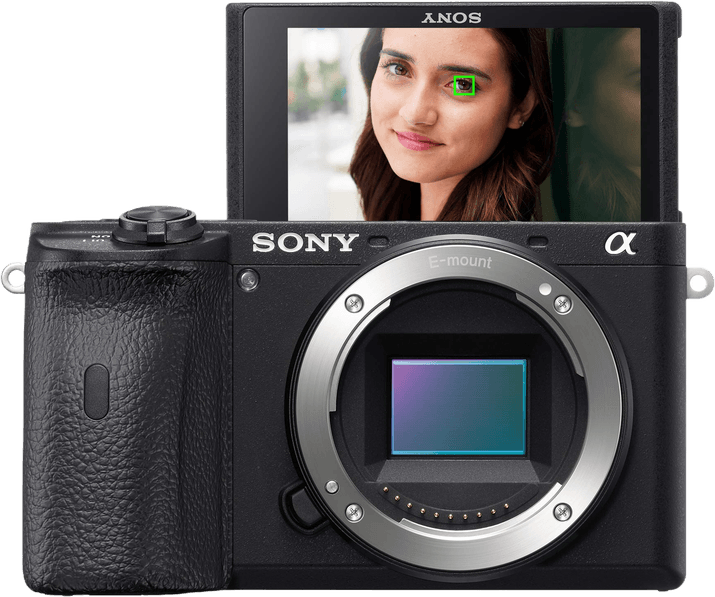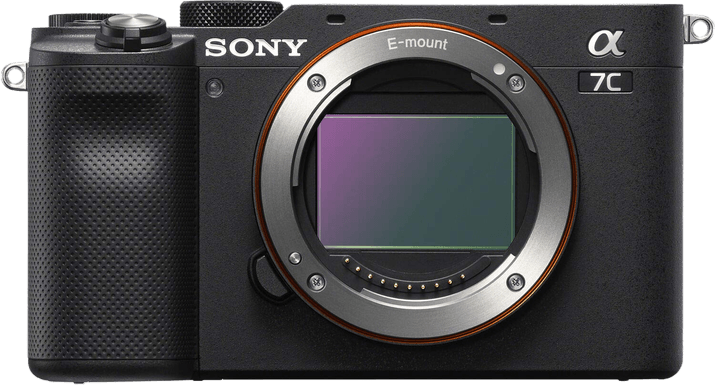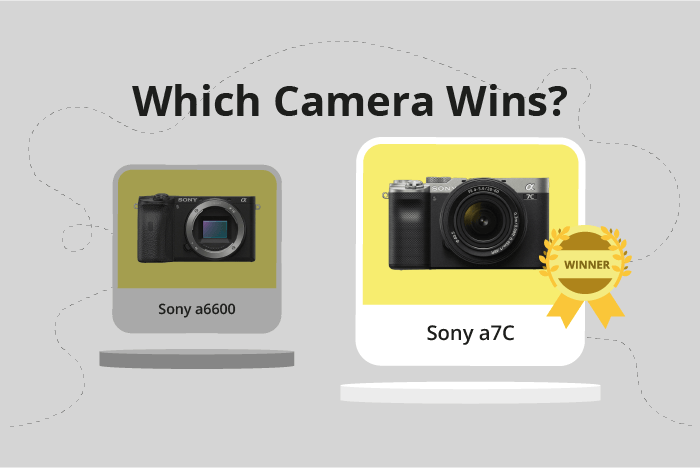Sony a6600 vs a7C Comparison
Sony a6600

Sony a7C

The Sony a7C emerges as the winner with a score of 78/100, edging out the Sony a6600 at 75/100. Both cameras are mirrorless and share a similar size and weight, with the a6600 measuring 120 x 67 x 69mm and weighing 503g, while the a7C is slightly larger at 124 x 71 x 60mm and 509g.
The a7C’s higher score reflects its superior performance, despite being released a year later in 2020 and having a higher launch price of $1799 compared to the a6600’s $1200 price tag in 2019. The Sony a7C offers better overall features and capabilities, making it a more attractive option for photographers.
However, the Sony a6600 still has its merits, particularly its lower price point, which may appeal to budget-conscious consumers. It also offers a slightly more compact form factor, which could be a deciding factor for some users.
Taking these factors into account, the Sony a7C is the better camera, but the a6600 remains a viable option for those seeking a more affordable and compact alternative.
Sony a6600 vs a7C Overview and Optics
The Sony a7C outperforms the Sony a6600 in optics with a score of 80/100 compared to the a6600’s 76/100. Both cameras share common specifications, including 24.2 megapixels, CMOS sensor type, Bionz X processor, Sony lens mounts, and image stabilization. However, there are specific features that set these cameras apart.
The Sony a7C’s superiority lies in its higher DXOMARK sensor score of 95 and its full-frame sensor size, compared to the a6600’s DXOMARK score of 82 and APS-C sensor size. The full-frame sensor provides better low-light performance, increased dynamic range, and improved image quality. Additionally, the Sony a7C utilizes the Sony FE lens mount, which offers a larger selection of high-quality lenses, providing more flexibility and creative options for photographers.
On the other hand, the Sony a6600 has a slightly faster shooting speed of 11 frames per second compared to the a7C’s 10 frames per second. This advantage may benefit photographers who frequently shoot fast-moving subjects, such as sports or wildlife. However, the difference in shooting speed is minimal and may not significantly impact the overall shooting experience.
Taking these factors into account, the Sony a7C stands out as the better option for photographers seeking superior image quality and a larger selection of lenses. Although the Sony a6600 has a marginally faster shooting speed, the benefits of the a7C’s full-frame sensor and higher DXOMARK score make it the more compelling choice for those prioritizing optics performance.
Sony a6600 vs a7C Video Performance
The Sony a6600 outperforms the Sony a7C in video capabilities with a score of 91/100, compared to the a7C’s score of 70/100. Both cameras share some common specifications, such as 4K max video resolution and dimensions of 3840 x 2160. Additionally, both cameras have built-in time-lapse functionality.
The a6600 has a significant advantage with its max video frame rate of 100fps, while the a7C offers only 30fps. This higher frame rate allows the a6600 to provide smoother slow-motion footage and better capture fast-moving subjects. This feature makes the a6600 a more suitable choice for users who require high-quality video performance.
On the other hand, the a7C does not offer any specific advantage over the a6600 in terms of video capabilities. With a lower video score and lesser frame rate, it is clear that the a6600 is the superior choice for videographers.
Considering the points mentioned above, the Sony a6600 is the better option for those seeking advanced video capabilities. Its higher video score, coupled with a 100fps max video frame rate, makes it the clear winner in this comparison. Meanwhile, the Sony a7C falls short in providing any notable advantages in video performance. As a result, users who prioritize video recording quality and features should opt for the Sony a6600 over the a7C.
Sony a6600 vs a7C Features and Benefits
The Sony a6600 and the Sony a7C both have a feature score of 81 out of 100, indicating that these cameras are evenly matched in terms of features. They share several specifications, making them comparable options for potential buyers.
Both cameras have a 3-inch screen with a resolution of 921,600 dots. They also have touchscreens and flip screens, allowing users to easily navigate the menu and compose their shots from various angles. Neither camera has GPS, but they both have WIFI and Bluetooth capabilities for quick and seamless image transfer and remote control.
The Sony a6600 excels in certain aspects, such as its slightly smaller size and lighter weight, making it more portable and convenient for travel and everyday use. Additionally, the a6600 has a slightly longer battery life, allowing for more shots per charge.
On the other hand, the Sony a7C has a full-frame sensor, providing better image quality and improved low-light performance. This feature is particularly valuable for photographers who require high-quality images in challenging lighting conditions.
Each camera has its advantages and disadvantages depending on the needs of the user. The Sony a6600 is more portable and has a longer battery life, making it suitable for photographers who prioritize convenience and extended shooting sessions. The Sony a7C, with its full-frame sensor, is better suited for those who require superior image quality and low-light performance.
Both cameras offer a range of features that cater to different photography needs. The choice between the Sony a6600 and the Sony a7C ultimately depends on individual preferences and requirements.
Sony a6600 vs a7C Storage and Battery
The Sony a6600 outperforms the Sony a7C in storage and battery with a score of 48/100 compared to 45/100. Both cameras share some common specifications, including a single memory card slot and USB charging capabilities. They also accept SD, SDHC, and SDXC memory cards, with the a7C being compatible with UHS-II cards for faster data transfer.
The a6600 excels in battery life, providing 810 shots per charge, while the a7C offers 740 shots. Both cameras use the NP-FZ100 battery type. This longer battery life makes the a6600 a more reliable option for extended shooting sessions.
On the other hand, the a7C’s advantage lies in its compatibility with UHS-II memory cards, allowing for faster data transfer and potentially better performance when dealing with large files or continuous shooting.
Taking these factors into account, the a6600 offers superior battery life, whereas the a7C provides better memory card compatibility for enhanced data transfer speeds.
Alternatives to the Sony a6600 and a7C
Are you still undecided about which camera is right for you? Have a look at these popular comparisons that feature the Sony a6600 or the Sony a7C:

